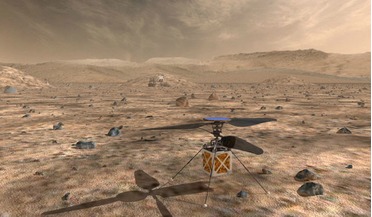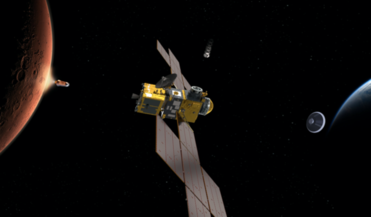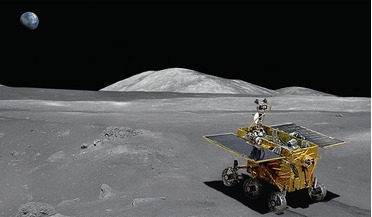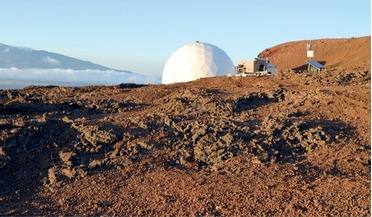 13 March 2019
'Marscopter' to accompany rover on Mars 2020 mission
13 March 2019
'Marscopter' to accompany rover on Mars 2020 mission
... and there are some places that they simply can’t go. What would be really handy on the next Mars mission is a small helicopter that could whizz over the surface, taking pictures as it went. We're in luck then, as NASA has...
 23 April 2018
The International Atlas of Mars Exploration, Vols 1 & 2
23 April 2018
The International Atlas of Mars Exploration, Vols 1 & 2
..., with sections on Phobos and Deimos and Mars mission data, but the great majority of the book comprises a “chronological sequence of missions and events”. Although this is a history of Mars exploration, the most important differentiating factor (its...
 12 November 2020
ESA and NASA to partner on Mars sample return mission
12 November 2020
ESA and NASA to partner on Mars sample return mission
... been praised by an Independent Review Board set up to review the multi-year Mars missions. The Mars Sample Return campaign foresees NASA and ESA launching multiple missions to the Red Planet to collect samples, launch them into space and...
 July 2014
Is there a space race or are India and China just coming of age?
July 2014
Is there a space race or are India and China just coming of age?
... and the European Space Agency. Success is far from assured, however; historically more than half of all Mars missions have failed. Smaller space players, such as Indonesia, Taiwan and Singapore, are ursuing satellite communications technology...
 May 2017
Recipe for success on flights to Mars
May 2017
Recipe for success on flights to Mars
... into some of the issues that will be faced by future crews journeying to Mars. HI-SEAS (Hawai’i Space Exploration Analog & Simulation) is a series of simulated Mars missions funded by NASA and run by Dr Kim Binsted of the University of Hawaii. The...
 May 2021
NASA’s women of inspiration
May 2021
NASA’s women of inspiration
...-up test. NASA/JPL-Caltech Alongside Dr Mohan, many other women were in the spotlight for this ambitious Mars mission. Diana Trujillo, an immigrant who moved to the US from Colombia with only $300 and whose story was...